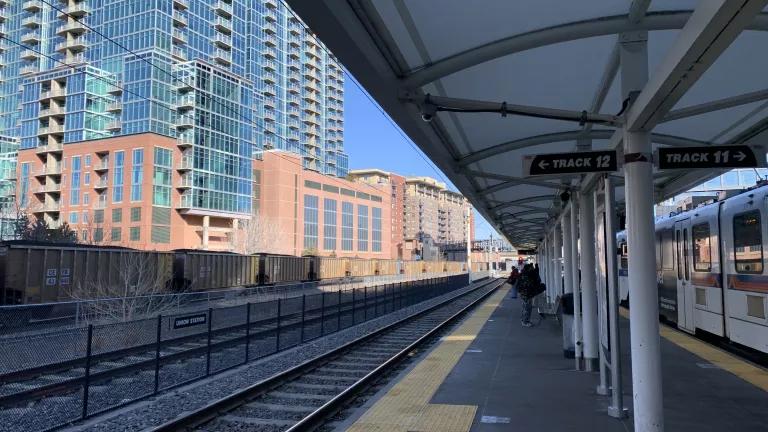A Tool for Communities to Build Resilience and Equity

The Watts community, anchored by the Watts Towers and the 103rd Street Blue Line Station, is one of Los Angeles’ most historic neighborhoods. The site of a revolt and riots with police in 1965, Watts came to represent the enormity of racial tension in the country. Now, over 50 years later, the community is implementing new green infrastructure projects resulting in major environmental and economic benefits to the neighborhood—as well as a surge in neighborhood pride.
With the support of longstanding community partnerships and most recently, funding from the state cap and trade program, Watts leaders are focusing on honoring their culture and history while providing lasting benefits to residents. Community-driven efforts to transform the neighborhood will soon be realized in the form of urban greening, including stormwater management and safer streets.
In the Little Tokyo neighborhood of Los Angeles, another partnership of which NRDC was a part, neighborhood initiatives have continued through the Sustainable Little Tokyo Initiative dedicated to environmental, economic, and cultural sustainability.
In Boston, the Talbot Norfolk Triangle Eco-Innovation District continues to advance sustainability and economic prosperity through energy efficient retrofits of existing housing, supporting local businesses, and equitable transit-oriented development.
In collaboration with LISC (Local Initiatives Support Corporation) and with residents, community development corporations, municipalities, sustainability planners and finance experts, NRDC worked in these historically disinvested neighborhoods and six others under its Green Neighborhoods program, and it continues to engage with communities across the country through new initiatives.
Kaid Benfield, my former mentor and colleague, masterminded NRDC’s work in putting a human face on sustainability. One of the co-founders of the LEED for Neighborhood Development rating system, he has written and spoken extensively on sustainable, inclusive neighborhoods, and along with our colleague, Jessica Millman, launched NRDC’s work at the neighborhood level.
Our experience in ensuring that redevelopment and new growth would benefit existing residents became the basis for the Green Neighborhoods Tool, which describes principles and best practices for building in neighborhoods in ways that are beneficial for the environment and for the people who live there. In developing the tool, we sought to provide a framework for achieving a high level of sustainability while also including strong standards for health and equity to better align comprehensive plans, policies, and investments with community visions and goals. By examining neighborhoods in a holistic manner, communities can articulate and quantify what sustainability at the local scale looks like.
This is important in many ways—not the least of which is due to historical developments. After the recession of 2008, new construction picked up rapidly and environmental advocates realized there was little public policy or guidance on environmental standards for community revitalization. Tools like LEED (Leadership in Energy and Environmental Design) were created to help curtail sprawl and promote better location efficiency to reduce carbon and save energy. While these tools encourage public participation, equity considerations were often previously left out.
The Green Neighborhoods tool consists of ethical guiding principles for working with neighborhoods and technical sustainability metrics based on LEED for Neighborhood Development.
These principles specifically include prioritizing areas of greatest disinvestment or vulnerability, engaging with and respecting the knowledge and history of those residents, collaborating with grassroots leadership, aligning with the goals that exist in the community, leveraging opportunities and piloting innovative solutions. These principles are critically important in light of new green investments in renewable energy and climate resilience.
The principles help ensure that projects foster economic opportunity and well-being for residents, including transit and other clean transportation options, affordable housing, resilient buildings and homes, and clean air and water.
The environmental standards and practices for inclusive development continue to guide our current work in communities, for example, as part of the Strong Prosperous and Resilient Communities Challenge (SPARCC) initiative.
We have a way to go to ensure that revitalization processes are greener and more equitable, but places like Watts show that it’s possible. NRDC has been working to support models of homegrown revitalization in places across the country for many years and we continue to support equitable investments for people and the planet through SPARCC. Our work in communities values community voices, addressing areas of disinvestment and vulnerability, and supporting place-based solutions to climate change and social justice.




